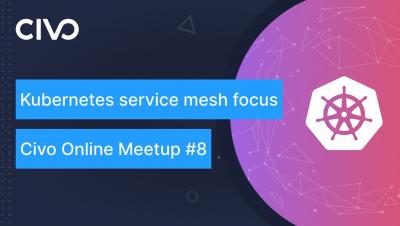Operations | Monitoring | ITSM | DevOps | Cloud
Service Mesh
The latest News and Information on Service Mesh, APIs and related technologies.
Podcast: Break Things on Purpose | Zack Butcher, Founding Engineer at Tetrate
Welcome back to another edition of “Build Things on Purpose.” This time Jason is joined by Zack Butcher, a founding engineer at Tetrate. They also break down Istio’s ins and outs and the lessons learned there, the role of open source projects and their reception, and more. Tune in to this episode and others for all things chaos engineering!
How to monitor containerized and service-meshed network communication with Datadog NPM
Containers are lightweight, portable, easily scalable, and enable you to run multiple workloads on the same host efficiently, particularly when using an orchestration platform like Kubernetes or Amazon ECS. But containers also introduce monitoring challenges. Containerized environments may comprise vast webs of distributed endpoints and dependencies that rely on complex network communication.
Do you really need a service mesh?
The challenges involved in deploying and managing microservices have led to the creation of the service mesh, a tool for adding observability, security, and traffic management capabilities at the application layer. While a service mesh is intended to help developers and SREs with a number of use cases related to service-to-service communication within Kubernetes clusters, a service mesh also adds operational complexity and introduces an additional control plane for security teams to manage.
Creating Envoy WebAssembly Extensions
In the CNCF ecosystem, Envoy, an open source service proxy developed by Lyft, is a very common choice in service mesh networking. In a previous post we discussed that both Consul and Istio leverage Envoy. Were you aware that you can extend Envoy’s capabilities with WebAssembly? What is WebAssembly? WebAssembly, or Wasm as it is often abbreviated, is not so much of a programming language as it is a specification for a binary instruction format that can be run in sandboxed virtual machines.
Announcing Istio integration
Adoption of service meshes like Istio is increasing. As a result, Speedscale has developed a webassembly plugin. We extended Envoy using Rust, and no changes are required to your Istio configuration. This allows us to leverage the same sidecars that you have deployed throughout your environment to inspect API traffic. Once we are listening through Istio, the typical Speedscale magic can take place. We can use the data to build integration/performance test suites and autogenerate service mocks.
The Service Mesh Landscape in 2021
A service mesh is a software infrastructure layer for controlling communication between services and usually tasked with handling all the network logic required to make microservice applications work seamlessly in a cloud-native environment. It’s the perfect solution to your communications problems.











